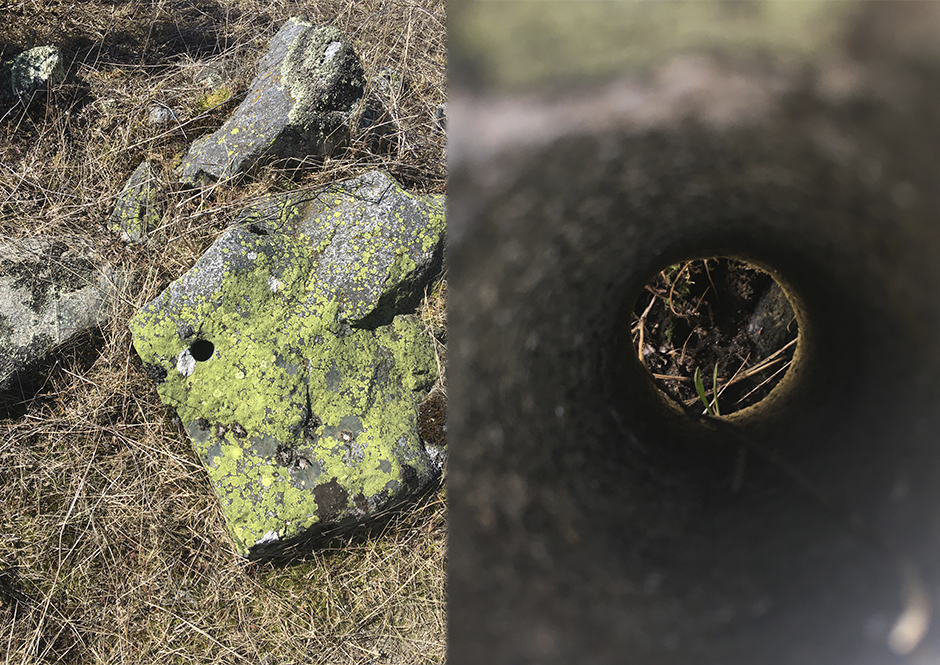(19.09.2022)
Bogong Village (a small workers/tourist/workers village built for the Kiewa Hydro Scheme). Mid september 2022 (Spring).
I write this from Bogong Village, a small hamlet in the Victorian Alps, near the Bogong High Plains. Like all of this state, this is land that has been lived in and moved across for a very long time – undoubtedly in changing and dynamic ways. Contemporary attempts to attribute borders, boundaries, and claims to land here are mitigated by the violence, separation, and oppression of the colonial regime, as well as by the confusion and scarcity of recorded source material. Like everywhere else, culture, connection to place, and responsibility are not static, but responsive to situation and to context – they grow, shift and change.
Today this area is understood as somewhere between and within the lands of the language groups of Pallanganmiddang/Waywurru and the Dhudhuroa. It is also very close to the approximate location of a group known as Mogullumbidj, who were recorded as speaking Dhudhuroa.
This place, new to me, feels familiar. Different but not alien. I have lived all my life in the inner suburbs of Melbourne. I’ve been to the high country a few times before, but not to this part. There's a connection between these places, they feel connected. I know that the people who lived in these places, and all those between, have been in sociality for a long time. That people, objects, stories, and culture have been circulated. There are also plenty of new ways now in circulation here. There are at least three type of deer (one too smart to be shot from a helicopter). The village reads like some kind of Scandinavian themed English garden. There is a lot of concrete, and many pipes. The newest power plant is underground and is topped with a ‘naturalised’ landscape. For the moment, the village has returned to an echo of its first iteration – largely housing sessional workers for nearby Mt Beauty and Falls Creek Alpine Resort – where just over 450,000 people visit for each winter.
Due to a self imposed, logistical timeline, I’m trying to hurriedly produce the beginnings of my work. But finding myself much more interested in settling in and getting a feel for things.
I don’t know anything about birds. I think I see a couple of flame robins in the village. I’ve recently learned the name, in a different, lower part of the south east. I know there is a red breasted one and a more plain mottled brown one; and that these are mating pairs. I don’t want to know anything more about them without sharing their space.
Up on the mountain, between the now patchy snow and lichen’d rocks of spring I see another (I think). I feel a presence first. They are only small, and at a distance hard to see, hard to notice. At the right angle in this white and soggy grey-green environment the red catches the light and jumps out of its surroundings. Its mate is there too. They are fluttering around and watching me. I’m a little off the trail, away from the commotion above. They watch and follow. As I move into a less snowy and more green patch of the slope I notice more of them. A busy time for these birds it seems.
I am walking in a valley of boulders, patchy snow, and bog like waterways running fast now with the melts of spring. The water flow is controlled, further up above me the water trickles out of a huge dam that is the first step in the production of hydroelectricity. The dam wall is made of tiers of rockwalls. Made from small stones, my mind goes to earlier colonial stone fences, to much earlier Gunditjmarra houses, to stone eel traps, to a mention of Aboriginal stone houses in this region in an early colonial journal. Above me cross country skiers cross the lower tier of the dam wall, well dressed and supplied for multi day trips, or sleek and unencumbered for the days outing.
Back in the village I see a similar bird, with an additional marking. Through the Internet I learn it is a scarlet robin. I woke early this morning to look for fog banks to photograph. I watched the little clouds that formed over and around Lake Guy make their slow way over the damn wall and start their descent of the waterway. I thought about them. I thought about a view of the world from above – from particles of moisture, clumped together, and slow moving, following the plans of the landscape below. Eventually dissipating. I thought about how the mountains extend to the weather, and about how we measure places.
Image above is a composite of two photographs of a hole in a rock I came across.
